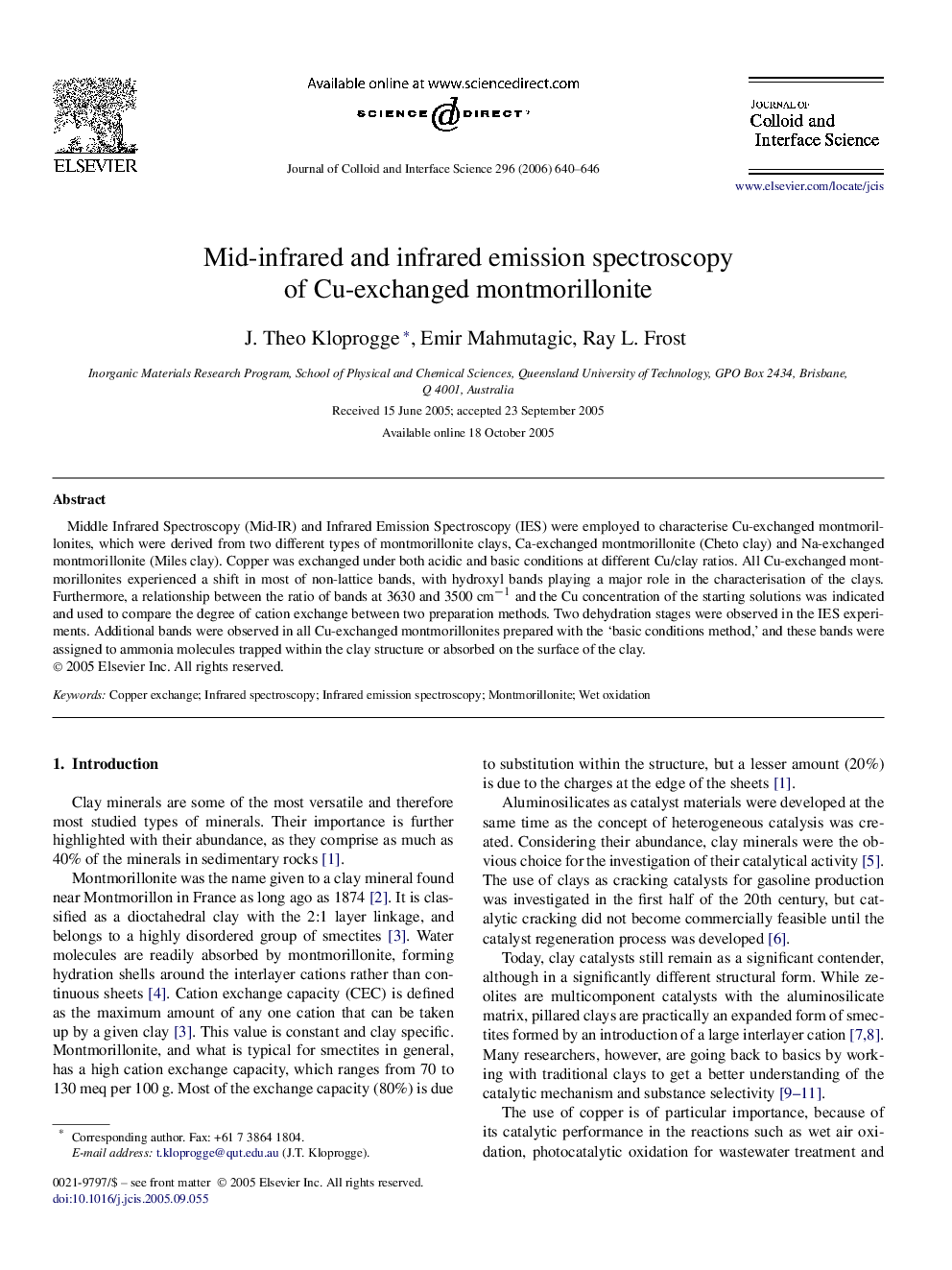| Article ID | Journal | Published Year | Pages | File Type |
|---|---|---|---|---|
| 613759 | Journal of Colloid and Interface Science | 2006 | 7 Pages |
Middle Infrared Spectroscopy (Mid-IR) and Infrared Emission Spectroscopy (IES) were employed to characterise Cu-exchanged montmorillonites, which were derived from two different types of montmorillonite clays, Ca-exchanged montmorillonite (Cheto clay) and Na-exchanged montmorillonite (Miles clay). Copper was exchanged under both acidic and basic conditions at different Cu/clay ratios. All Cu-exchanged montmorillonites experienced a shift in most of non-lattice bands, with hydroxyl bands playing a major role in the characterisation of the clays. Furthermore, a relationship between the ratio of bands at 3630 and 3500 cm−1 and the Cu concentration of the starting solutions was indicated and used to compare the degree of cation exchange between two preparation methods. Two dehydration stages were observed in the IES experiments. Additional bands were observed in all Cu-exchanged montmorillonites prepared with the ‘basic conditions method,’ and these bands were assigned to ammonia molecules trapped within the clay structure or absorbed on the surface of the clay.
Graphical abstractMid infrared spectroscopy and infrared emission spectroscopy were employed to characterise two different Cu-exchanged montmorillonites. Copper was exchanged under both acidic and basic conditions at different Cu/clay ratios.Figure optionsDownload full-size imageDownload as PowerPoint slide
